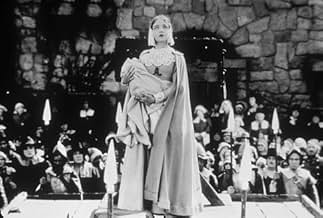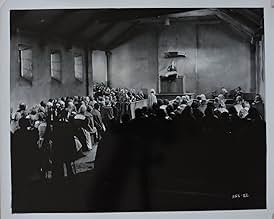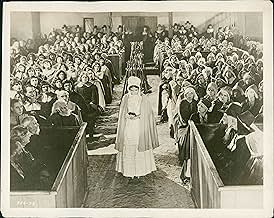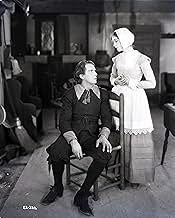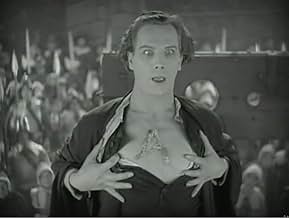IMDb-BEWERTUNG
7,6/10
2096
IHRE BEWERTUNG
Nach der Geburt eines außerehelichen Kindes wird eine junge Puritanerin unter Druck gesetzt, den Namen ihres Geliebten preiszugeben.Nach der Geburt eines außerehelichen Kindes wird eine junge Puritanerin unter Druck gesetzt, den Namen ihres Geliebten preiszugeben.Nach der Geburt eines außerehelichen Kindes wird eine junge Puritanerin unter Druck gesetzt, den Namen ihres Geliebten preiszugeben.
- Auszeichnungen
- 1 wins total
Buck Black
- Child in crowd
- (Nicht genannt)
Nora Cecil
- Townswoman
- (Nicht genannt)
Iron Eyes Cody
- Young Indian at Dunking
- (Nicht genannt)
Artye Folz
- Child
- (Nicht genannt)
Dorothy Gray
- Child
- (Nicht genannt)
Douglas Haig
- Minor Role
- (Nicht genannt)
Betsy Ann Hisle
- Child
- (Nicht genannt)
Empfohlene Bewertungen
After years of desperately wanting to see this movie I finally got hold of a copy of it. I put the DVD in the machine and waited with baited breath, was the film going to be as wonderful as the other commenters(?)had rated it? was it going to be anywhere near as good as the other Gish/Hanson/Seastrom collaboration "The Wind"? Well, the answer was that it was everything I hoped for and more. The version I saw a recording of TCM's restoration so the quality of the print veered from superb to not quite so good, but, in all honesty that did not matter as I soon got caught up in the story of Hester Prynne and the Rev. Dimmesdale. The acting was superb by all the cast, the direction was excellent and the whole setting of the movie was outstanding. It still amazes me who there are those who will not watch a silent movie, are you crazy? This version is a million miles better than the Demi Moore/Gary Oldman version made 70 years later, the chemistry between Gish and Hanson is perfect, the child actress Joyce Coad who plays Pearl, the love child, is delightful and Henry Walthall is menacing as Roger Chillingworth, Karl Dane also deserves mentioning as Master Giles in a slightly comedic role. The only downside to the movie and it had nothing to do with the movie itself was that I bought it from a guy who contacted me via IMDb and led me to believe it was his own print, I paid $52 for a TV recording off TCM. He is contacting people concerning vintage movies so beware if someone offers to get a print of that vintage movie you want to see.
10Doug-193
Exactly what we've lost since the end of the silent era is magnificently on display in Victor Seastrom's THE SCARLET LETTER: shimmering black and white photography of superbly composed and paced scenes capturing the essence of the American classic novel by Hawthorne, though certain details of the story have been altered and may annoy literary purists. This is not the novel but a separate work, more than a perceptive and intelligent picturization. Here is the great, lost art of silent screen acting, with Lillian Gish, unforgettable as Hesther Prynne, leading an accomplished cast. The result is pure visual poetry.
There just aren't enough words to describe the beautiful performances in this film....not that words are needed, then or now. Victor Seastrom's lovingly crafted scenes provide perfect visual frames for the transcendent performances of Lillian Gish and Lars Hanson. An artistic triumph for everyone concerned, and a bittersweet reminder of what was lost with the death of the art of the silent film. (The Turner restoration is alas, also bittersweet, as prints of wildly differing quality had to be "married" in order to create a substantially complete copy of the subject. Thus, viewers move from scenes that shimmer with pristine beauty to muddy, contrasty dupes. It's a tribute to the art of all concerned however, that this is not the distracting issue it might be with a lesser film. Like any work of art, you won't notice the cracks and flaws after a while if you're paying attention as you should. It's just a shame that the entire film isn't as mint-fresh as some of its scenes.)
Victor Sjöström's The Scarlet Letter is a masterpiece. It should be put on DVD for all to enjoy, even if parts of the film have to be supplemented with 16mm dupes. TCM hasn't shown it in years, yet they show The Wind several times every year. It makes no sense. The Scarlet Letter is even better than The Wind. It should be shown in high school classes along with the required reading of the classic novel by Nathanial Hawthorne. It makes my head spin to think of how many thousands of children would fall in love with silent film if they were only exposed to this classic. I hate to think of them being exposed to that horrific Demi Moore version instead.
Lillian Gish is radiantly beautiful as the demure but sensual Hester Prynne. Lars Hanson makes an exceptionally wonderful minister Dimmesdale, fighting his romantic feelings for the lovely Hester. Henry B. Walthall makes a very believable and threatening Roger Prynne. Karl Dane adds some wonderful comic relief as Master Giles. The M-G-M production values here are exceptional and the cinematography by Henrik Sartov glows. I love the tracking shots of Hester and the Reverend Arthur Dimmesdale walking together in the woods, and the lovely shot of their reflections in the lake as they confess their love for one another. Poetry on screen. The musical score for the film is quite beautiful, commissioned by TCM in 2000. The only parts that got on my nerves were the harpsichord sections. The flute, piano and violin parts were the best.
Your silent film viewing is not complete without seeing this classic. It's Lillian Gish's best film. Don't miss it.
Lillian Gish is radiantly beautiful as the demure but sensual Hester Prynne. Lars Hanson makes an exceptionally wonderful minister Dimmesdale, fighting his romantic feelings for the lovely Hester. Henry B. Walthall makes a very believable and threatening Roger Prynne. Karl Dane adds some wonderful comic relief as Master Giles. The M-G-M production values here are exceptional and the cinematography by Henrik Sartov glows. I love the tracking shots of Hester and the Reverend Arthur Dimmesdale walking together in the woods, and the lovely shot of their reflections in the lake as they confess their love for one another. Poetry on screen. The musical score for the film is quite beautiful, commissioned by TCM in 2000. The only parts that got on my nerves were the harpsichord sections. The flute, piano and violin parts were the best.
Your silent film viewing is not complete without seeing this classic. It's Lillian Gish's best film. Don't miss it.
MGM's 1926 adaption of Nathaniel Hawthorne's "The Scarlet Letter" is, quite possibly, the best motion picture to have been released in the silent screen era's latter days. It can, undoubtedly, be looked upon as the best that two of that era's best actors-Lillian Gish & Lars Hanson-were paired up in. And, too, one very talented child actress, by the name of Joyce Coads, deserves to be given big credit. (She made only 10 more films before taking a final bow from the limelight; in her 2nd to last-"Devotion" 1931-she didn't get billing.) "The Scarlet Letter" should also be noted as, perhaps, the very best that Victor Seastrom- whom Charlie Chaplain had called "the best director in all the world" ever delivered. Just don't make the mistake of seeing this film as a good adaption of Hawthorne's novel. Because it's not. The film is a total of an hour and 20 minutes. Had it been really true to the novel, it just might have been longer than "Gone With The Wind." (And, speaking of the wind, as fate would have it, Seastrom directed only one more film in the US, which also teamed up Gish and Hanson: namely, "The Wind" (1928). MGM gave Seastrom his walking papers because he'd refused to give "The Wind" a happy ending. "The Scarlet Letter" of 1926 should also be seen by anyone who just might be under the mistaken impression that silent films can't leave a lasting impression.
Wusstest du schon
- WissenswertesLillian Gish learned that her mother had had a stroke in London and her sister, Dorothy Gish, urged her to get there on the first available boat. When Lillian informed director Victor Sjöström of the need to finish the film quickly, he created a shooting schedule that crammed two weeks worth of shooting into three days of non-stop work. The crew worked without complaint so that she could finish the film early and catch the earliest possible train to New York.
- Zitate
Mistress Hibbins: I am wrongly accused! Never hath my tongue been given to gossip!
The Governor: Falsehood! Her tongue hath wagged like the tail of a dog! Duck her again!
- Alternative VersionenIn 2000, Turner Entertainment Co. copyrighted a restored version with a musical score written by Lisa Catarineau and Mark Northam and a running time of 98 minutes. Its previous version ran 79 minutes.
- VerbindungenFeatured in Oscar '71 (1971)
Top-Auswahl
Melde dich zum Bewerten an und greife auf die Watchlist für personalisierte Empfehlungen zu.
- How long is The Scarlet Letter?Powered by Alexa
Details
- Erscheinungsdatum
- Herkunftsland
- Offizieller Standort
- Sprache
- Auch bekannt als
- Nathaniel Hawthorne's the Scarlet Letter
- Drehorte
- Produktionsfirma
- Weitere beteiligte Unternehmen bei IMDbPro anzeigen
Box Office
- Budget
- 430.290 $ (geschätzt)
- Laufzeit
- 1 Std. 55 Min.(115 min)
- Sound-Mix
- Seitenverhältnis
- 1.33 : 1
Zu dieser Seite beitragen
Bearbeitung vorschlagen oder fehlenden Inhalt hinzufügen

